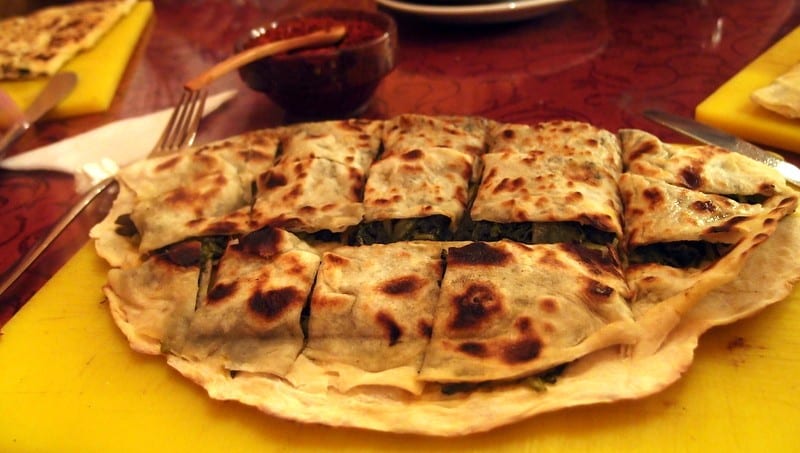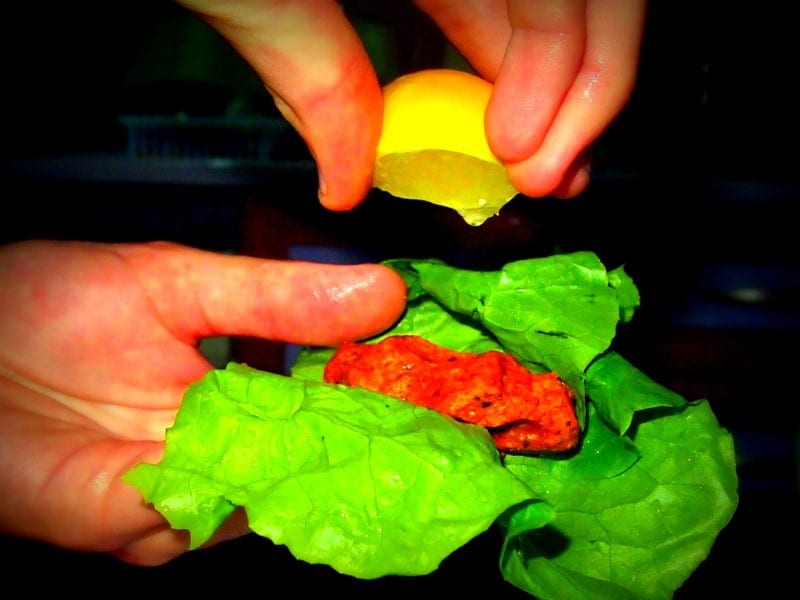Food is a big concern for vegetarian teachers, especially when it comes to traveling outside the big city.
Although Turkey is a meat-loving country known throughout the rest of the world for its famous kebabs, it also happens to be a vegetarian’s heaven on Earth.
Even the locals may sometimes be confused when you make meat-free requests, but, whether they immediately think of it or not, Turkish cuisine has tons of vegetarian dishes ranging from sweet to savory and back again.
You’ll never need to ask for a modified version of a dish, which kicks any chances of confusion out the window.
Turks are also highly hospitable and true feeders, meaning you will most likely need to be wheeled out of whichever home or restaurant you dine at.
Whether you’re after a big breakfast, a hearty dinner, or a snack while perusing the streets, there will literally be something for every taste on every city corner or household table.
-Read: Guide to teaching English in Turkey–
The Flavor of Turkey
Turkish cuisine centers around bold flavors and, as such, a wide variety of spices and sauces are used across the culinary board.
Merchants and travelers brought exotic spices from all over the world to be traded in marketplace mecca, and a lot of those flavors found their way into traditional Turkish cuisine.
There’s a reason why the Istanbul Spice Bazaar is one of the most famous markets in the world, after all.
In addition to isot, a dried black pepper, Turkish cuisine features a lot of cumin, mint, dill, and different varieties of biber (dried red pepper; think paprika).
Perhaps one of the biggest spice stars, though, is sumac, a burgundy powder that gives dishes a refreshing lemony flavor.
To complement this, plain yogurt (very similar to Greek yogurt) and fresh lemon can be added as a topping to practically every hot dish. A side of yogurt is often served in homes and at restaurants, but it is not really a street food.
Instead, vendors sell a citrusy yogurt-like drink called ayran, which is fairly salty and served cold in small boxes resembling milk cartons.
Although Turkish meals can come in large portions, the strong spices and addition of citrus ensure that most meals do not produce a lethargic feeling for the eater.
–Get your TESOL certification to teach English in Turkey!–
The Best Vegetarian Food in Turkey
For snacks or small meals on the go, Turkish street food caters to many appetites.
Lightly roasted chestnuts and dry fruit are featured at makeshift stands around the country.
Additionally, other vegetarian snacks and meals worth trying include:
Gözleme [gerz-leh-meh]
With fillings such as spinach, cheese, potato, and red pepper paste, this dish is a mix between a Turkish-style savory crepe and a stuffed flatbread.
They are served in many restaurants and small cafes, too.
Çiğ köfte [chee kurff-tay]
Although the literal translation of this dish is “raw meat”, çiğ köfte is typically served as a vegetarian appetizer in restaurants.
Stands on the street or small takeaway shops either serve it in family size to take home or, for a single order, they make it into a stuffed wrap. “Meat balls” are made from bulgar wheat, tomato paste, and various spices.
They are then wrapped in iceberg lettuce before the spicy sauce, sweet pomegranate syrup, fresh parsley, and eventually freshly squeezed lemon juice seal the deal.
This isn’t just one of the best meals that I had in Turkey: it’s one of the best meals that I’ve had….ever.
Kumpir [kum-peer]
While this huge snack is not Turkish in nature, it has definitely made itself at home in the big cities. Kumpir is the ultimate loaded baked potato.
At kumpir shops, you choose as many toppings as you want from a diverse buffet of salads, vegetables, sauces, and cheeses before sitting down to tuck in. Leaving hungry is not an option.
Turkish breakfast spread.
If you can only afford to eat one meal out, make sure it’s breakfast.
Consisting of a massive smorgasbord of breads, cheeses, hard boiled eggs, cucumbers,olives, sesame paste, and chocolate spread, no one does breakfast better than the Turks.
One stand-out player in the breakfast game is sigara böreği, filo pastry stick filled with a smooth white cheese.
Pair any of the various breads with kaymak, a dairy product similar to clotted cream and served with honey, and you’re sure to hit an early morning culinary home-run.
Çorba [chore-ba]
This is the Turkish word for soup and will be paired with a plethora of other words to detail the specific type. This is where it becomes tricky.
Lentil soup is a very common dish in Turkey, but, unfortunately, it’s usually made with beef stock.
Make sure to ask if you’re eating out or at someone’s home, though, because it’s certainly possible to make it veggie-friendly.
Zeytinyagli Dolma [zey-tin-yah-li dol-ma]
Served both hot and cold, these grape leaves stuffed with rice are a staple across the Mediterranean and the Balkans.
The rice is not dry and flavorless like in many Asian countries; rather, it is perfectly seasoned with olive oil and herbs.
Mind you, these can contain lamb or other types of meat, so make sure to request them without when ordering them.
Menemen
This is the equivalent of a scrambled egg casserole baked with onion, tomato, and green pepper.
Melting cheese on top is always a bonus, and Turkish supermarkets do not leave you wanting on the cheese front either.
Simit [sih-mit]
This is one of the most basic, yet iconic street foods in Turkey, and it can be found at all times of the day or night.
Simit is a ring-shaped, very dry bread that is often covered with sesame seeds. More simply, it is the Turkish version of a bagel.
They are eaten plain, dipped in jam or spreadable cheese (similar to cream cheese), or swallowed with a mouthful of salty ayran.
Make sure you save room to try one of the many tasty Turkish sweets for dessert. Lokum (commonly known across the world as Turkish Delight) is a national favorite, but don’t neglect everything you can get your hands on in the bakeries.
Breads, cookies, and other various confections go beyond the realm of average baked goods and sweets to create a totally unique dessert experience.
Helva can be purchased from the confectionary or the corner shop.
A super dense, super protein-filled paste made from sesame paste, nut butters, and a lot of sugar, helva comes in a brick shape and is eaten in small slices.
This dish is just as common at the breakfast table as it is for a sweet post-meal bite.









